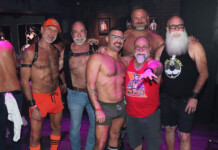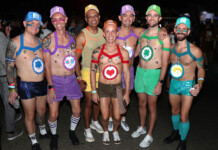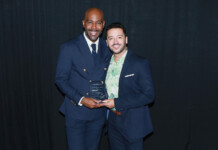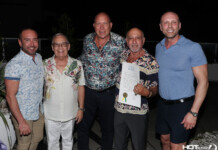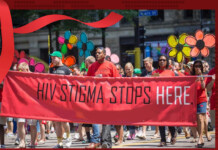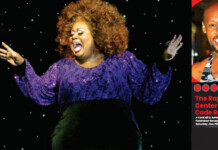
As a result of the release of the movie Stonewall last week, the Hotspots staff thought about what life was like for LGBT people back in 1969 compared to today. Nearly all of us can remember a time when being out and proud meant risking something — whether it be rejection from one’s family or the loss of employment. How far have we come since 1969? Hotspots investigates.
1969
The Stonewall Riots happened on June 27 and began the LGBT rights movement as we know it today. Only two states, Illinois and Connecticut, had decriminalized homosexuality by 1969. For those people in the rest of the country, being caught in police raids at gay meeting places, such as bars, meant that you would be arrested and your name and address would be printed in the newspaper. From there, these people would usually be fired from their jobs and shunned by their families. Just five years before, Senator Charley Johns spearheaded a witch hunt against gays in Florida’s public universities: over 300 people were either fired from their jobs or kicked out of school.
1973
The American Psychiatric Association removes homosexuality from its list of mental illnesses. At this time, Gallup reports that only 12% believe that homosexuality is something people are born with. That number would rise to 42% by 2014.
The largest attack against gay people in United States history occurred when an arsonist set the Upstairs Lounge, a gay bar in New Orleans, on fire. 32 people died. News coverage was scant, and what coverage did appear was not reported in an unbiased manner.
1977
 Dade County, Florida becomes the first county in Florida to pass an anti-discrimination ordinance that specifically protects gay people. Anita Bryant, a singer and spokeswoman for Florida Orange Juice, leads the charge to have the ordinance repealed. Also, for a time, she succeeded in banning openly gay teachers from Florida public schools, and she also led a movement to ban adoption by gay couples. Her political activism was a success but a boycott of
Dade County, Florida becomes the first county in Florida to pass an anti-discrimination ordinance that specifically protects gay people. Anita Bryant, a singer and spokeswoman for Florida Orange Juice, leads the charge to have the ordinance repealed. Also, for a time, she succeeded in banning openly gay teachers from Florida public schools, and she also led a movement to ban adoption by gay couples. Her political activism was a success but a boycott of  Florida Orange Juice, led heavily by gays, caused her to lose her promotional contract with the brand.
Florida Orange Juice, led heavily by gays, caused her to lose her promotional contract with the brand.
Also in 1977, Harvey Milk makes history by becoming the first openly gay elected official in the country, and he takes his seat on San Francisco’s Board of Supervisors. His assassination the next year sends shockwaves throughout the gay community nationwide.
1979
Over 100,000 people attend the first March on Washington for Lesbian and Gay Rights. By this time, while being openly gay still carried a large stigma in many parts of the country, the gay rights movement has successfully moved from “coming out” and “fitting in” to working to fix discrimination and hostility against gay people by homophobes.
1981
 AIDS (then called GRID) is first noticed among gay men in New York City and quickly becomes a national health issue. The Gay Men’s Health Crisis is founded in New York City. The mainstream media begins to cover AIDS but it isn’t until actor Rock Hudson’s death four years later that the topic becomes one of premier national importance. President Ronald Reagan famously did not utter the words “HIV” or “AIDS” until the seventh year of his eight years in the White House.
AIDS (then called GRID) is first noticed among gay men in New York City and quickly becomes a national health issue. The Gay Men’s Health Crisis is founded in New York City. The mainstream media begins to cover AIDS but it isn’t until actor Rock Hudson’s death four years later that the topic becomes one of premier national importance. President Ronald Reagan famously did not utter the words “HIV” or “AIDS” until the seventh year of his eight years in the White House.
1986
Bowers v. Hardwick is decided by the Supreme Court, which rules that there is no constitutional right to sodomy. It upholds Georgia’s anti-sodomy law as well as the laws across many other states.
1987
Coverage of gay issues increases in local media but national news outlets still ignore many gay-related stories. The second March on Washington is held this year, with 200,000 people in attendance, and it is ignored by Time, Newsweek and U.S. News and World Report.
1990
President George Bush signs the Hate Crimes Statistics Act into law, mandating the federal government to keep track of crimes that relate to the victim’s sexual orientation. This year many states pass laws that call for stronger sentences for anti-gay crimes, such as California and Connecticut. Seven states would pass gay rights legislation by 1992.
1993
 The third March on Washington draws over a million participants, including Tipper Gore, wife of Vice-President Al Gore. The majority of national media outlets follow the march for the first time. Also this year, a movie about the AIDS crisis and its impact on a man and his loved ones, Philadelphia, is released in theaters. The lead actor, Tom Hanks, would win an Oscar for his performance.
The third March on Washington draws over a million participants, including Tipper Gore, wife of Vice-President Al Gore. The majority of national media outlets follow the march for the first time. Also this year, a movie about the AIDS crisis and its impact on a man and his loved ones, Philadelphia, is released in theaters. The lead actor, Tom Hanks, would win an Oscar for his performance.
1994
Hawaii becomes the first of many states to specifically write into their constitution that marriage should be between a man and a woman, after gay couples tried unsuccessfully to apply for marriage licenses there.
1996
President Bill Clinton signs the Defence of Marriage Act, which would bar states from having to recognize same-sex marriages in other states and also would bar married gay couples from receiving federal benefits like straight couples receive. The Supreme Court, in Romer v. Evans, overturned Colorado’s voter-approved amendment that would have banned gay rights ordinances locally or statewide. San Francisco opens the nation’s first domestic partnership registry for gay couples.
1997
 Ellen DeGeneres comes out on her ABC sitcom Ellen. A number of television stations drop her show, and her coming out is heavily discussed in the press. Originally, coming out hurt Ellen, and her profile was visibly reduced in popular culture for a few years, but she earned herself a decisive comeback when her talk show premiered in 2003 to rave reviews.
Ellen DeGeneres comes out on her ABC sitcom Ellen. A number of television stations drop her show, and her coming out is heavily discussed in the press. Originally, coming out hurt Ellen, and her profile was visibly reduced in popular culture for a few years, but she earned herself a decisive comeback when her talk show premiered in 2003 to rave reviews.
1998
 The death of Matthew Shepard outside Laramie, Wyoming causes the country to discuss anti-gay harassment and violence for the first time. A renewed push for hate crime legislation begins.
The death of Matthew Shepard outside Laramie, Wyoming causes the country to discuss anti-gay harassment and violence for the first time. A renewed push for hate crime legislation begins.
2000
Vermont becomes the first state to legalize civil unions, which has lots of the same rights as a marriage, but not all rights. The topic of same-sex marriage is discussed as a viable option nationwide for the first time.
2003
The Supreme Court knocks down Texas’s anti-sodomy law in the case of Lawrence v. Texas. Thirteen other states’ sodomy laws are similarly invalidated, including Florida’s. Homosexuality is decriminalized for the first time in Florida, with the age of consent set at 18, equal to that of straight people.
2004
Massachusetts becomes the first state to legalize gay marriage.
2008
The California Supreme Court knocks down the state’s ban on gay marriage, and gay couples begin to wed. A voter initiative, Proposition 8, passes later that year, halting marriages in the state. Marriages would be reinstated in California for gay couples in 2013.
2011
For the very first time, Gallup records findings show a majority of Americans approve of gay marriage.
2013
The Defense of Marriage Act is found unconstitutional by the Supreme Court in the case of United States v. Windsor. Gay marriage is now legal in a handful of states and those couples will be allowed to file for federal benefits.
2014
Transgender rights and issues are being discussed by more people now than ever before. Laverne Cox makes history by becoming the first transgender woman to grace the cover of Time.
2015
In the case of Obergefell v. Hodges, the Supreme Court finds that the states’ bans on gay marriage are unconstitutional, and that marriage equality shall be the law of the land. By the time the court case was decided, thirty-six states had already legalized marriage equality, either through legislation or court cases. Couples in fourteen states began to wed on June 26.
October is LGBT History Month. To read more about our LGBT history, visit lgbthistorymonth.com.

